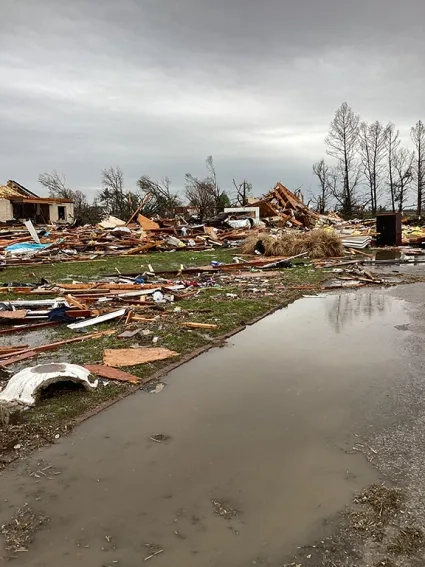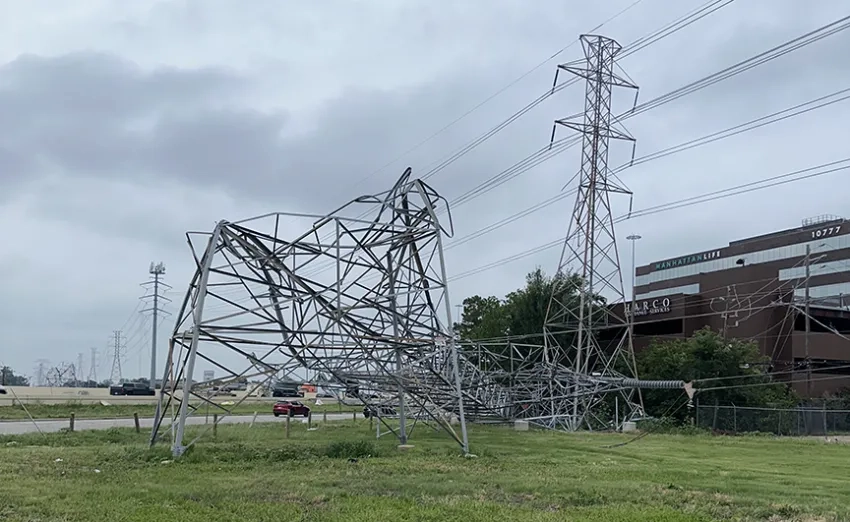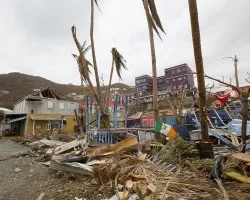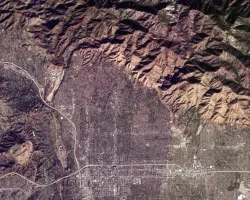Severe weather events, such as powerful thunderstorms, destructive hailstorms, and intense windstorms, pose ongoing threats to communities throughout most of the U.S. NASA’s Disasters Program is taking direct aim at these natural hazards by providing scientific tools and solutions designed to safeguard communities and infrastructure. Through its "Disasters Science to Action" portfolio, NASA supports innovative research projects that turn Earth observations into practical applications, aiding emergency managers and local community leaders who need timely, relevant and accurate information to make critical decisions.
Predicting Severe Storms to Protect Lives and Property
Scientists at NASA’s Langley Research Center are tackling one of the costliest severe weather hazards: hailstorms. These storms regularly cause extensive damage to homes, crops, and vehicles, resulting in billions of dollars in annual losses. The team is using satellite data collected over the past two decades to build detailed climatological records of hailstorm activity in Europe and North America. The project also benefits from collaboration with WTW and the European severe storm laboratory whose expertise in insurance risk modeling and operational forecasting, respectively, helps ensure the research can be translated into decision-relevant tools. By identifying patterns in storm intensity and frequency, the project aims to improve forecasting and risk assessment. The data produced will help the insurance industry develop more accurate risk models and enable emergency managers to better prepare communities against severe storms. NASA's recent activations of its Disasters Response Coordination System (DRCS) for tornadoes and flooding, underscore the immediate practical value of advancing science for these types of disasters.
Protecting Roads and Communities from Hurricane Devastation
In Texas, Avantika Gori’s research team at Rice University is investigating how hurricanes and tropical cyclones threaten transportation networks. When these storms make landfall, communities are often devastated by heavy rains, high winds, and flooding which can damage infrastructure and block key roadways. A key strength of this work is the team’s collaboration with the Houston-Galveston Area Council which ensures the modeling framework for the project aligns with local planning needs and supports infrastructure resilience across cities and counties along the Texas Gulf Coast. Gori and her team are integrating satellite-based precipitation measurements and soil moisture data to develop precise flood predictions, particularly for densely populated regions like Southeast Texas. By producing detailed maps of potential infrastructure impacts – such as road closures, debris accumulation, and bridge damage – the researchers will provide critical tools for city planners and emergency responders. This approach will help communities better anticipate transportation disruptions, enhancing their ability to keep residents safe during severe storms.
Keeping the Lights on in the Face of Storms
At NASA’s Jet Propulsion Laboratory, Ryan McGranaghan and his team are addressing the vulnerability of electrical power grids during severe weather events. Powerful thunderstorms, intense heat waves, wildfires, and even solar storms can disrupt electricity distribution, plunging communities into darkness and jeopardizing health and safety. By working closely with stakeholders from California's utility sector and national grid operators, the researchers gain direct feedback that helps guide the development of tools to meet operational needs. McGranaghan’s team is working closely with system managers and utility planners to develop a comprehensive system that assesses risks from these multiple threats simultaneously. By combining satellite data, advanced modeling techniques, and real-time observations, this project aims to produce actionable insights that grid operators can use to minimize the duration and extent of power outages. Those insights aim to bolster immediate response efforts and support long-term strategies to enhance infrastructure resilience.
Each of these projects reflect NASA’s continued commitment to addressing severe weather threats with practical solutions. By equipping communities and local governments with advanced science, tools and applications, NASA’s Disasters Program helps ensure they can better prepare for, respond to, and recover from severe weather events. Through strong collaboration with stakeholders such as insurance providers, urban planners, emergency responders, and infrastructure managers, NASA’s research directly enhances local decision-making, ultimately protecting lives and livelihoods.
Learn More






